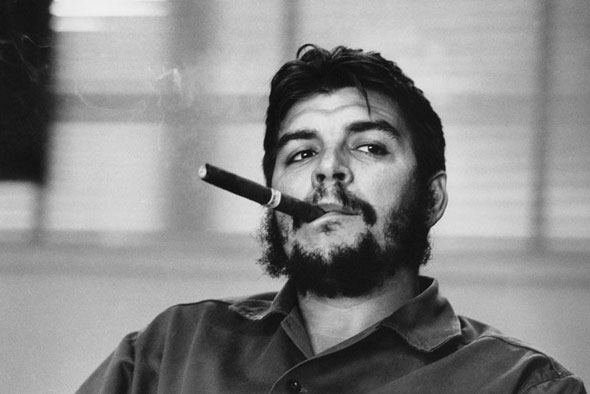How many of us would really know Argentine Marxist revolutionary Che Guevara if it wasn’t for that one iconic portrait image made by Swiss Magnum photographer René Burri who passed away on October 20, 2014, in his hometown of Zurich after a battle with cancer. René Burri, who leaves an enormous legacy, was 81. May you rest in peace, maestro.
I had contacted Mr. Burri in May with the request for an interview. His partner Clotilde Burri-Blanc who by then already managed all of her husband’s correspondence said René Burri was tired and needed to gain strength for the René Burri: Movement exhibition this September in Paris which he dearly wanted to attend. During his last years Burri lived in the Parisian suburb of Ivry sur Seine.
René Burri was an old school Leica photographer. Later on always wearing his Borsalino, he began working with Magnum as an associate in 1955 before becoming a full member in 1959. Best known for his portraits of Che Guevara, Picasso and Le Corbusier, he was “not only one of the great post war photographers, he was also one of the most generous people I have had the privilege to meet,” said Magnum president Martin Parr in a statement.
In his long career Burri did industrial work, journalism and was always looking for his “own image.” The photographer with a working-class background never really thought that he has a style; rather, he believed his work was very difficult to categorize. Constantly curious and in “discovery mode,” success didn’t come from nothing. It took him six years to get to Picasso and a decade to build up a relationship with Le Corbusier. How he got that famous Che Guevara portrait?

In a 2010 interview with The Guardian (read the paper’s Burri obituary), the Swiss tells the story of how his Che Guevara portrait, photographed in Havana in 1963, came to be. It was a harried, three-hour session and the young revolutionary never once looked at Burri, who danced around him in the small, dimly lit office.
Modest about his talents, Burri said the final, iconic shot was thanks to the man in front of the lens, not the one behind the camera. In this video, the iconic photographer takes us on a journey through six images from his archive, photographing figures like the chain-smoking Che his office in 1963, Pablo Picasso 1957 in Cannes and American G.I.s being entertained in a brothel in Seoul in 1961.
Burri also recalls his iconic 1960 São Paulo photograph “Men on a Rooftop, 1960,” shooting the San Cristobal Stables in Mexico city in 1976 and the reopening of the Suez Canal in 1974, explaining why modern techniques like photoshopping are getting in the way of our pursuit for the truth…
Burri digital? He kept to his Leica. From an interview in 2011:
Outwardly, the device has hardly changed these past 50 years — aside from the little display at the back. A digital camera has to be kept in check like a racehorse. Digital photography tempts you to start snapping away indiscriminately.
Back in the old days with no photography awards and no photo exhibitions, back in the old days when magazine’s were all that’s available to photographers, Burri often had only two or three rolls of film at his disposal for an entire photo reportage.
His first ever photograph that’s remembered? As a child he was using his father’s camera, like here — as a 13-year-old! — for this portrait snap of Winston Churchill in Zurich in 1946, which certainly shows nascent skill and ability for composition of a maestro who actually never wanted to become a photographer, it was circumstances that led him into it…



